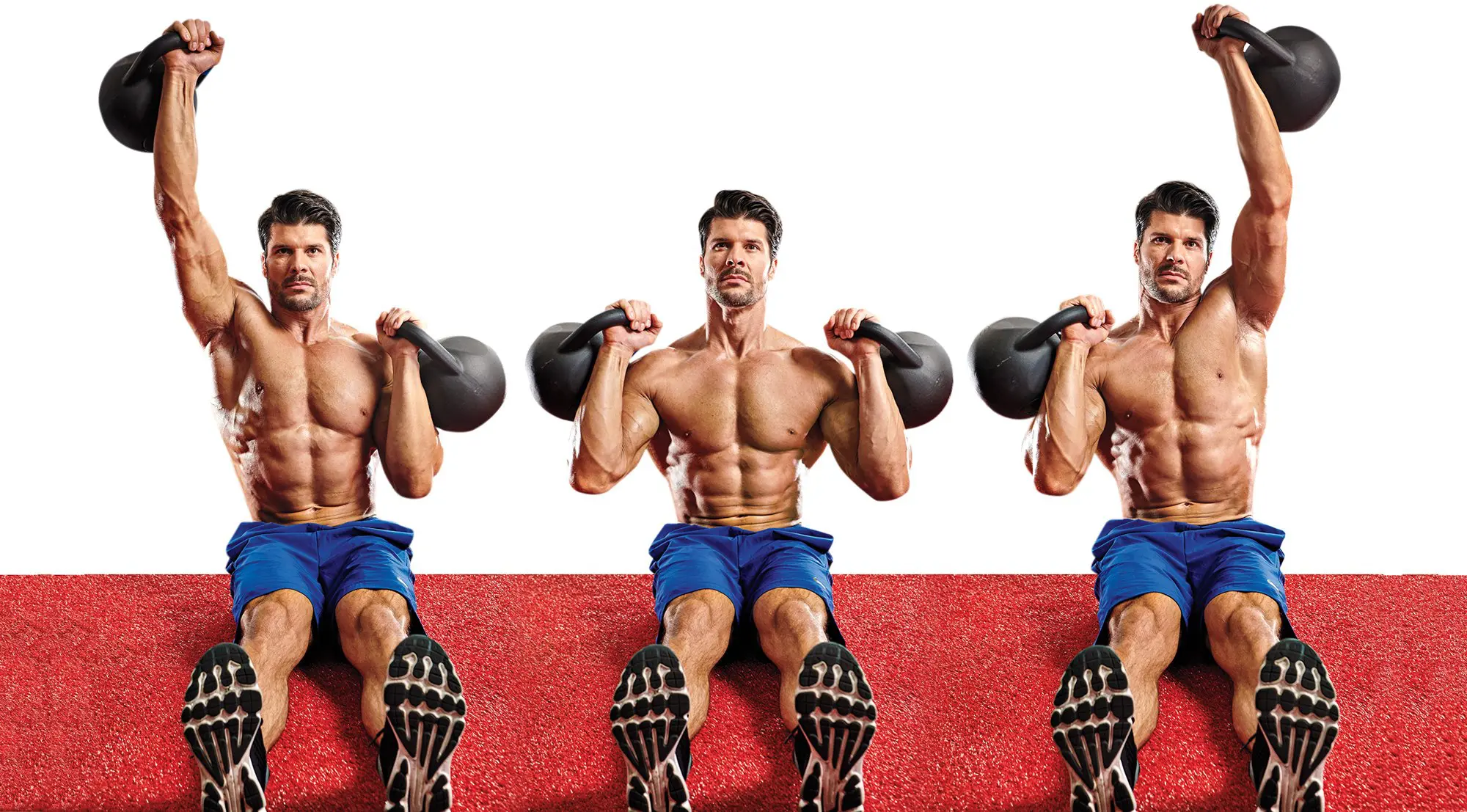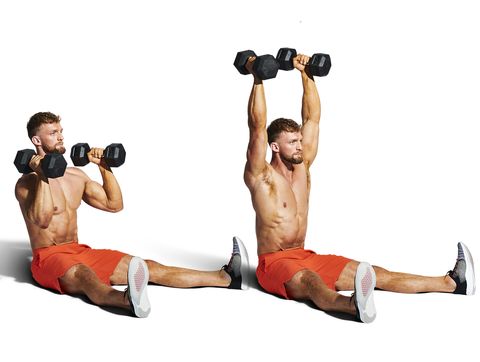
The best online fitness resource you'll ever need. We filter out the BS to ensure you meet your health and fitness goals!

The best online fitness resource you'll ever need. We filter out the BS to ensure you meet your health and fitness goals!

If you want a strong strict overhead press, wide shoulders and a solid, stable set of rotator cuffs, you should consider including the Z press in your regular routine. It is amongst the most functionally useful, intense and unforgiving styles of press you can find, both in terms of mechanical disadvantage and the lack of leeway it gives you for the quality of your technique.
It’s a firm favourite of many powerlifters and strongmen because it’s incredibly challenging and brings about so many great benefits (more on this below). Though using body English (code: cheating on form, albeit tactically done) has its place in any grinding workout, nothing will ultimately beat putting yourself under pressure with perfect form.
This is what the Z press promotes. There is no margin of error: you have to get your technique right. It will teach you how to move the bar above your head with a clean path, smooth deltoid action and very little (if any) momentum from your lower body or core.
You may be surprised by how light you have to keep the bar. If you’re used to overhead pressing 100kg strict, expect more like 50-60 on the Z press. Where does the remaining 40-50kg disappear to? Body English and lower body momentum, mostly, both of which are cut right out of this movement.
The main difference between regular strict and push presses and a Z press is that you will be sitting on the floor for the Z press. Strict and push press variation use legs to stabilise the trunk and force momentum from the feet upwards (especially the case with the push press). With the Z press, your shoulders and arms are basically on their own.
Performing the z press is simple, if not easy. All you will need are a barbell and a power rack, or something to rest the barbell on. Don’t clean a barbell into position as you ca risk injuring yourself.
Alternatively, you can perform the z press with dumbbells or kettlebells.
To perform the z press:
You will naturally want to push the weight slightly forwards, and/or tilt your body back, in order to bring some momentum and pectoral power into play and better balance the torso. Resist this: keep your core and back tight and your whole body as motionless as possible.
This may be hard to do, however. Try going lighter if you’re struggling. If this doesn’t work, it may be because you’re unable to maintain correct bar path due to a lack of mobility. Focus on shoulder mobility training for a few weeks, take an extended mobility workout before performing the Z press, and consider using dumbbells rather than a barbell for a little while.
You will want to keep your knees straight throughout the Z press- not locked out, but nearly so. Don’t slouch at all. This can be a surprisingly uncomfortable position to maintain even without load, but practice makes perfect and it will be a useful exercise to run through.
If you struggle to get into position in the first place, it could be that your hips need a little work. Use your warmup to mobilise these alongside your shoulders. Focus on core strength, in addition. A few weeks of core work and hip mobility should have you comfortably getting into position.
Finally, plug any weak spots. The Z press is great for flagging up which parts of your body are falling behind. Lift mindfully and make a note of where you feel weak, unstable or sore. This will typically be the hips, core, upper back, triceps, or deltoids, though realistically could be anywhere. The main things this movement will demand of your body are a great deal of trunk strength, hip flexor mobility, hamstring flexibility, and lumbar and thoracic spine health. If any of these are lagging, you will have a problem. However, better the devil you know, and you will soon know where you are struggling.
When you figure it out, pay extra attention to your weak spots and train them more heavily for a few weeks until they balance out.
Bear all of the following in mind when you set up for the Z press. Run through them as a pre-flight checklist so that you are as prepared as possible for the exercise’s strict application:
Do
Do not

There are three main benefits to the Z press that end up improving your overhead press performance, shoulder development and overall pressing power output quite drastically. These are:
So far, so obvious. This is a challenging pressing movement. As such, it will lead to great developments in upper body strength. Use moderate weight to begin, before adding increasingly greater weight over time to progressively overload. Specifically, it will work the strength of, and interplay between, the deltoids, triceps and, to a small degree, the upper pectorals.
In addition, by using the Z press to improve proper overhead pressing mechanics, you will enjoy benefits to scapular stability and upper trap development. This will lead to more stability across the entire shoulder section, which will better enable you to control the barbell through its correct path and will have direct carryover to your proficiency in other upper body exercises like the bench press or row.
Due to the limited role of the legs in this movement, the Z press will lead to greater upper body adaptation than other types of overhead press.
If you’re after good t-shirt muscles, you may overlook your core. Even those who go in for performance and strength gains often do so. This is wrong. The Z press will go a long way to redressing this and proving to you the value of a strong midsection.
The core is the foundation of every movement. It is needed if you ever want to press good amounts of weight and see any real development in any other area of your body. As the Z press gets rid of momentum from the legs and hips (too often used as a proxy for core strength by lifters with poor technique) and allows for no compensation from other areas of the body, it forces you to fully tighten and engage the core.
It will also show you how weak your core is. If you go from a 100kg overhead press with sloppy technique to 30kg on the Z press, you will be humbled. You will know that your core is crying out for attention
As there is no margin of error and no cheating allowed by the mechanics of the Z press, everything has to come from the shoulders, arms and core: everything has to come from actual good-quality overhead pressing technique.
You cannot shift your centre of gravity or borrow directional force from the lower body. You cannot wiggle out of the correct plane of motion. You need smooth control, good shoulder mobility and fantastic mind-muscle connection, control and contractile strength through the torso.
Nothing less will do.
With all of this in mind, let’s quickly run through all of the main muscles worked by the Z press. Naturally, for all the reasons given above (lack of lower body engagement, lack of body English, lack of momentum etc), the Z press puts a lot more pressure into the upper body than many other types of press.
Therefore, the following muscles are all used in, and all benefit from, the Z press:
You shouldn’t use the Z press instead of your overhead press. There is actually a lot to be gained from engaging your legs and using your whole body as a unit: that’s just about the most perfect use of a compound exercise going, after all.
However, the Z press is a great auxiliary or assistance exercise when you’re looking to perfect and/or build up your overhead pressing capabilities. It should be used as one of your main tools in training for strength and mobility and maintaining the overall health of your muscles and joints.
Go super light for high reps as part of your assistance protocol in your overhead press days. Swap out the overhead press every so often for heavy (ish) sets of the Z press and go for low reps. Spend a whole training cycle working on it as the main event before switching back to a conventional strict press and finding out what amazing gains you have made.
However you use it, the Z press should be your best friend if you’re serious about overhead press strength and shoulder development.